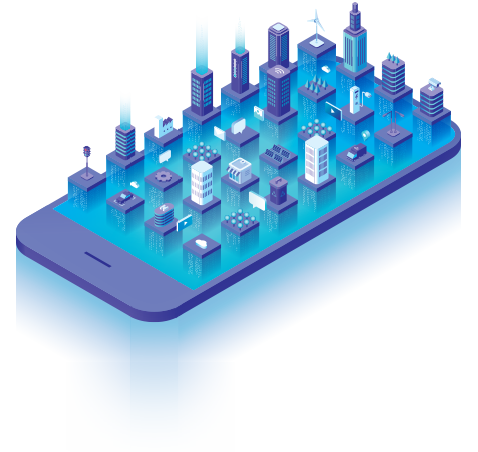insight
WHEN 5G MET SATELLITE
5G is the new global wireless standard, enabling an evolved network designed to connect all devices, machines, and objects.
The advantages of 5G technology include:
- Increased speeds for multi-Gbps peak data
- Vastly reduced latency
- Enhanced reliability
- Substantial network capacity
- More available
- A consistent experience for a wider user pool
While 5G will deliver faster and more efficient mobile broadband services than 4G LTE, that’s only the tip of the iceberg. 5G also reaches previously untapped service areas, such as connecting the IoT and mission-critical communications.
In summation, 5G improves (and will continue to find new ways to improve) efficiency and performance for users, industries, and–really–the whole world.
Keeping the above sentiments in mind, 5G leaders have set their sights beyond our world. More to the point, 5G has taken its talents to outer space, and the innovation of the 5G satellite has come to be.
Why has 5G left the earth’s atmosphere?
As of June 2022, 5G networks were operational in 70 countries.That'salmost double the 38 of mid-2020.
Due to this rapid adoption of 5G, demand for the technology often outpaces infrastructural growth, most commonly in areas with sparse populations and impeded access.
5G improves (and will continue to find new ways to improve) efficiency and performance for users, industries, and–really–the whole world.
In line with 5G networks’ outpacing of infrastructure is its literal rise above our atmosphere.
Satellite communication has operated independently of mobile networking and as standalone technology for decades. Enter 5G architecture, and suddenly things look different. Now, there’s a new generation of satellites able to integrate with networks in rural/remote areas to manage connectivity to the following:
- Vessels
- Cars
- Aeroplanes
- Miscellaneous IoT
Soon enough, 5G signals will beam down from space to support the earth’s ‘terrestrial’ 5G infrastructure.
Thus, there’s now a new satellite-driven space race. Consumers and network users will be the winners of this interstellar 5G competition, resulting in a seamless wireless experience worldwide.

Examining LEO satellites
Geostationary communication satellites have been in orbit for 50 years. GEO satellites are over 1000 kg and operate 36,000km above the earth. These satellites remain fixed, allowing ground-based antennas to point at them, despite the earth’s orbit.
Conversely, Low Earth Orbit (LEO) satellites can operate between 500 and 2000 km above the earth’s surface. They’re miniature, weighing under 500kg, and they have a low orbit that significantly reduces latency due to superior positioning for data reception and transmission.
One pitfall of this setup is a smaller coverage area. Therefore, LEO satellites handoff communication traffic and signals across a multitude of satellites. As such, there’s efficiency and mass-scale coverage over a pre-set area.
Below is a list of tech companies that have either entered or are about to enter the 5G LEO satellite space:
- SpaceX continues launching batches of Starlink satellites. The end goal is 30,000 LEO satellites
- Amazon plans to have 3,236 full Kuiper launched by 2029
- OneWeb, a London-based tech company with investors including Coca-Cola, Virgin, and Softbank, has been involved in 5G LEO satellites for years

5G satellites promise broader coverage than ever
Smart cities powered and connected by 5G will require small 5G towers built in high-traffic areas. These towers call for mass volumes of bandwidth. They also have a direct view of optimal performance and speed.
Through LEO satellites, cellular 5G networks will extend to sea, air, and various remote areas beyond the reach of small cell networks. As such, 5G services for cities will be available for cruise liners, aeroplanes, and other remotely-located vehicles.
M2M connections - connections between two machines that are entirely devoid of human interaction,and IoT sensors on mines, farms, and other remote work sites will benefit from 5G satellites’ vast coverage.
Through LEO satellites, cellular 5G networks will extend to sea, air, and various remote areas beyond the reach of small cell networks. As such, 5G services for cities will be available for cruise liners, aeroplanes, and other remotely-located vehicles.
5G satellite integration will bolster the user experience on high capacity applications
The Quality of Experience (QoE) of high-capacity applications will skyrocket as satellites integrate with 5G infrastructures in the following ways:
- Traffic will be intelligently routed and offloaded, saving satellites valuable spectrum while improving network resilience
- Satellites can take over for 5G infrastructure in the instance of a natural disaster: It won’t be possible to provide all services; 5G satellites will provide life-saving (and other critical) communication services during disasters
Satellites can bolster high-speed platforms and network environments that struggle to be managed by terrestrial systems (e.g., connected cars, drones, and aeroplanes).
Other areas where 5G satellites will flourish
Below, we’ll explore a few other scenarios where 5G satellites will have a positive impact:
Revolutionary media streaming
The mobile revolution and digital transformation have shifted media content trends toward low latency, on-demand streaming instead of live, linear television broadcasts. 5G improves upon 4G's revolutionary media streaming through enhanced mobile broadband (e.g., 8k video streaming and online VR/AR gaming). 5G satellites can globally transmit increased data rate, ensuring lower latency and smooth deliveries to mobile devices.
Satellites can bolster high-speed platforms and network environments that struggle to be managed by terrestrial systems (e.g., connected cars, drones, and aeroplanes).
Enhanced reliability and security
Combatting the security vulnerabilities exposed by billions of IoT devices calls for constant device updates. Additionally, 5G devices will need efficient, globally-scaled data distribution. IoT networks stand to benefit from the vast broadcast capabilities and coverage offered by 5G satellites. These advantages include data aggregation and shared uplink connectivity for mass volumes of IoT devices. The added capacity of satellites can be used as an IoT backup or support congested data traffic. Thus, higher peak rates are permitted, offering enhanced reliability and security in mass-machine communication.
Centralised backhaul for edge processing, traffic unloading, and resource sharing
Satellite networks can supply the necessary backhaul for high-speed devices by decreasing end-to-end delay and providing larger constellations. This particular benefit can help offset the issues 5G has with satisfying the backhaul needs of networks with significant numbers of small cells. Satellite networks offer a singular centralised backhaul for edge processing, traffic unloading, and resource sharing. By strategically blending performance characteristics and economics, satellites can bolster high-speed platforms and network environments that struggle to be managed by terrestrial systems (e.g., connected cars, drones, and aeroplanes).
Conclusion: satellites and 5G forge a marriage set to stand the test of time
We’ve entered a new stage of innovation and digital transformation. 5G satellites combine two impressive technological entities to generate results that can improve the quality of life for a broader range of people in more locations than ever.
Needless to say, we’re eager to see what the future beholds for 5G satellites.